

Civil Engineering News. University uses driving simulator for vehicle-to-vehicle research While some students may think Patrick F.

Taylor Hall is made up of typical lecture halls and engineering classrooms, they may not know about the driving simulator on the second floor. Sherif Ishak, professor and undergraduate coordinator of the University’s civil engineering program, and graduate research assistant Julius Codjoe are working on starting a new [...] Pedro Reis receives Early Career Award from National Science Foundation The National Science Foundation (NSF) announced recently that Pedro Reis will receive a 2014 Early Career Award from the NSF’s Structural Mechanics and Materials program for his project, “Smart Morphable Surfaces for Aerodynamic Drag Control.”
Computer models of tornadoes show possible sheltering region behind hills Using 3-D computer models, University of Arkansas researchers have demonstrated the influence of hills on tornadoes. She's Alive... Beautiful... Finite... Hurting... Worth Dying for. The Energy of Earthquakes. World's Biggest Earthquakes. OurAmazingPlanet Staff | April 12, 2011 05:51pm ET Credit: USGS.
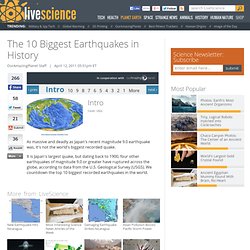
As massive and deadly as Japan's recent magnitude 9.0 earthquake was, it's not the world's biggest recorded quake. It is Japan's largest quake, but dating back to 1900, four other earthquakes of magnitude 9.0 or greater have ruptured across the globe, according to data from the U.S. Geological Survey (USGS). We Need a Better EQ Warning System. A state-of-the-art, first-in-the-world earthquake early warning system in now installed and operational in California.
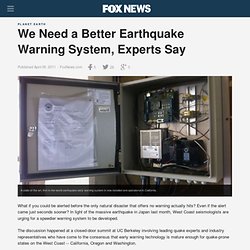
What if you could be alerted before the only natural disaster that offers no warning actually hits? Even if the alert came just seconds sooner? In light of the massive earthquake in Japan last month, West Coast seismologists are urging for a speedier warning system to be developed. The discussion happened at a closed-door summit at UC Berkeley involving leading quake experts and industry representatives who have come to the consensus that early warning technology is mature enough for quake-prone states on the West Coast -- California, Oregon and Washington. “A robust early warning system could be operating within five years in California, at a potential cost of $80 million over five years,” said organizer Richard Allen, associate director of the UC Berkeley Seismological Laboratory and associate professor of earth and planetary sciences. Is the U.S. EQ Ready? Not by a Long Shot! <br/><a href=" US News</a> | <a href=" Business News</a> Copy As Japan struggles to recover from its devastating earthquake, a new report released today says Americans have been lulled into a false sense of security about seismic activity.
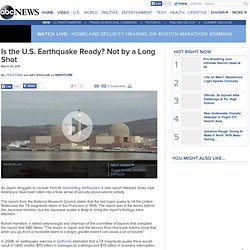
The report, from the National Research Council, states that the last major quake to hit the United States was the 7.8 magnitude seism in San Francisco in 1906. The report was in the works before the Japanese tremblor, but the Japanese quake is likely to bring the report's findings extra attention. Big EQ Study Indicates They Don't Set Off Others Far Away.
NEW YORK — Here's some good news in the wake of Japan's disaster: A new study says big earthquakes don't set off other dangerous ones around the globe.
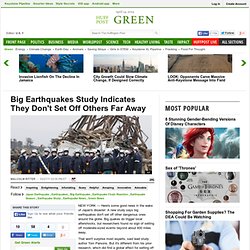
Big quakes do trigger local aftershocks, but researchers found no sign of setting off moderate-sized events beyond about 600 miles away. That won't surprise most experts, said lead study author Tom Parsons. But it's different from his prior research, which did find a global effect for setting off small quakes, said Parsons, of the U.S.
Geological Survey in Menlo Park, Calif. Are Huge EQ's related? Japan-style EQ unlikely to hit Southern CA. Although Southern California is riddled with geological fault lines, and some are relatively close to both the San Onofre and Diablo Canyon nuclear sites, experts said the region was at little risk of experiencing a catastrophic earthquake and tsunami like the ones that hit Japan.
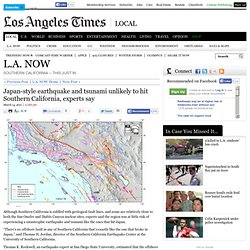
“There’s no offshore fault in any of Southern California that’s exactly like the one that broke in Japan,” said Thomas H. Jordan, director of the Southern California Earthquake Center at the University of Southern California. Thomas K. Rockwell, an earthquake expert at San Diego State University, estimated that the offshore faults near the San Onofre nuclear power plant could generate earthquakes of magnitude up to 7 to 7.5, but he said a major earthquake in the area might occur only once every couple of thousand years. US First Tsunami-Resistant Building- Oregon. Plans to build the nation's first tsunami-resistant building are unfolding in Cannon Beach, Ore., in a region that is almost identical, seismically, to the subduction zone that triggered the earthquake and tsunami in Japan last week.

Elevated 4.5 meters off the ground, the building would provide an evacuation zone for coastal residents and tourists while also serving as a new city hall. "The goals are to save lives and provide continuity of government," says Jay Raskin, an architect and former Cannon Beach mayor who is helping to spearhead the design process. The Pacific Northwest coast is vulnerable to quakes produced by the Cascadia subduction zone, a 950-kilometer-long fault running from northern California to Vancouver, B.C. 10 Interesting Earthquake Facts. Spring-pendulum seismometers were used before electronics were able to measure the size of earthquakes.
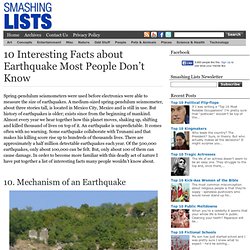
A medium-sized spring-pendulum seismometer, about three stories tall, is located in Mexico City, Mexico and is still in use. But history of earthquakes is older; exists since from the beginning of mankind. Almost every year we hear together how this planet moves, shaking up, shifting and killed thousand of lives on top of it. An earthquake is unpredictable. It comes often with no warning. Are U.S. States & Cities Prepared for a Disaster? Japan didn't get caught off guard.
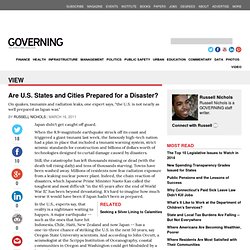
When the 8.9-magnitude earthquake struck off its coast and triggered a giant tsunami last week, the famously high-tech nation had a plan in place that included a tsunami warning system, strict seismic standards for construction and billions of dollars worth of technologies designed to curtail damage caused by disasters. Still, the catastrophe has left thousands missing or dead (with the death toll rising daily) and tens of thousands starving. Towns have been washed away. Millions of residents now fear radiation exposure from a leaking nuclear power plant. Limits of Human Foresight against natural disasters. NTV Japan, via Associated Press UNAVOIDABLE A tsunami wave, as it heads to shore in the area of Natori City, Japan.
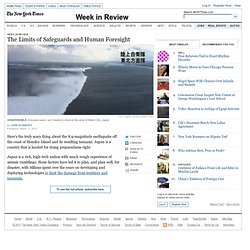
Japan is a rich, high-tech nation with much rough experience of seismic rumblings: those factors have led it to plan, and plan well, for disaster, with billions spent over the years on developing and deploying technologies to limit the damage from temblors and tsunamis. Those steps almost certainly kept the death count lower than it might otherwise be — especially in comparison with the multitudes lost in recent earthquakes in China and Haiti.
Earthquake vs Tsunami. Earthquake vs Tsunami Earthquake and Tsunami are both natural disasters of epic proportions that have caused devastation in terms of damage of property and lives whenever they have struck in any part of the world. These disasters are not of same magnitude all the time and it is their magnitude that decides the level of destruction that takes place in their wake. There are many similarities between earthquakes and tsunamis but there is also difference between earthquake and tsunami.
Science of EQs. What is an earthquake? An earthquake is what happens when two blocks of the earth suddenly slip past one another. Why we can't Predict The Next Big EQ. In the wake of the massive 9.0-magnitude earthquake that has devastated Japan, an obvious question arises… why didn’t we see it coming? The fact is that earthquake prediction has long baffled scientists, and the current consensus is that it’s actually impossible. There are very few areas of science where experts are actually willing to make definitive statements that something is impossible. And yet that’s pretty much exactly where the field of earthquake prediction stands, at least ever since a 1996 paper in the journal Science in which four seismology experts published a paper simple entitled, “Earthquakes Cannot Be Predicted.”
That’s a remarkably absolute statement, and it’s worth understanding just why seismologists took such a strong stance. First, we should just quickly review precisely what an earthquake is. Constant Tremors. Japan: How to build for an EQ? EQ Magnitude vs Intensity. Earthquake Magnitude vs Intensity Earthquake Magnitude vs Intensity. Lists of earthquakes. The following is a list of earthquake lists, and of top earthquakes by magnitude and fatalities. Main lists[edit] Lists of earthquakes by country[edit] Largest earthquakes by magnitude[edit] A pie chart comparing the seismic moment release of the three largest earthquakes for the hundred year period from 1906 to 2005 with that for all earthquakes of magnitudes <6, 6 to 7, 7 to 8 and >8 for the same period Earthquakes of magnitude 8.0 and greater since 1900.
Earthquake Anatomy. Richter scale. Earthquake retrofitting: Japan disaster gets Southern Californians calling earthquake retrofitting firms - latimes.com. Like many construction businesses, Jonathan Weinstein's company suffered during the economic downturn. Then, on Friday, the phones hardly stopped ringing. $6.8 billion needed to ready US for the next big EQ.